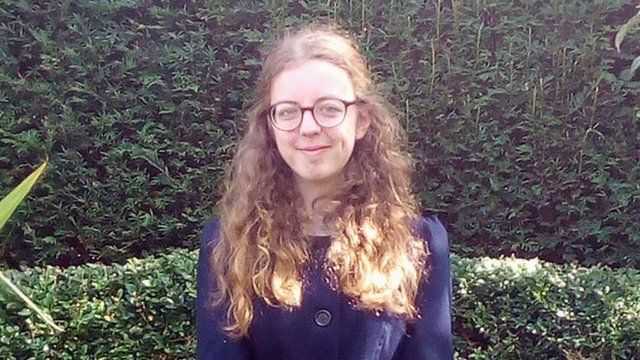Record gender gap in university places
- Published

"I was never really put off by the fees," says Maya Little.
She is part of a surging number of young women beginning university this autumn, while the number of men going into higher education seems to have stalled.
When fees increased in England in 2012 to £9,000, demand for places carried on rising for women, but not for men.
The latest official figures show 55% of women entering higher education by the age of 30 compared with 43% of men.
The proportion of women pursuing degrees has risen from 47% in 2012 - an annual increase of 18,000 more individual female students.
But there are fewer male students starting this year than in 2011 - with the gender gap now at its widest ever point.
Fees frozen
The reasons behind the gender difference in applications for university places are disputed - but for Maya, tuition fees were not going to be a deciding factor.
"If they had carried on increasing, I'd be thinking a bit harder. But I see it as an investment in what I want to do with my life," she said.
Maya, a student from Hastings, is starting at Oxford University in the week when Theresa May announced a freeze in tuition fees at current levels of £9,250.
She says she backs the cap and the prime minister's next step should be to cut the interest rate for student loan repayments, which has been increased this autumn to up to 6.1%.
Maya was eligible for free meals while at school and was supported by a social mobility charity, the Villiers Park Educational Trust, which mentors potential university applicants.
She says that in applying to a university such as Oxford, it helped her to "feel like a I have a right to be here" and that "this is not a closed world".
'Good investment'
Natalie Whitham, from Accrington, was also supported by Villiers Park. None of her family has previously been to university, but she is starting this week at Oxford.
She thought hard about the cost before applying and is glad the latest rise has been cancelled.
"The fees would have been a large aspect of why I wouldn't have gone," she says.
But like so many other female students, she decided that university was worth pursuing.
"I would definitely say it's a good investment."
The overall number of students has climbed consistently in recent decades - and is now within touching distance of the 50% target of young people set by Tony Blair when he was prime minister.
Nick Hillman, director of the Higher Education Policy Institute, has published a report saying that a changing economy needs even more graduates and in fact 70% of people should enter higher education.
But any further increase will depend on getting more boys into university.
Why are there more women students?
Mary Curnock Cook, former head of the Ucas admissions service, believes the widening gender gap is becoming a bigger educational divide than between rich and poor.
She has warned that if current trends continue, the next generation of girls will be 75% more likely to go to university than their male peers.
There are many theories about what's behind the trend, including:
- Female students get better A-level results and so are likely to get more university places.
- Nursing has been made a graduate profession, and with its very high proportion of women entrants, this has pushed up overall female student numbers.
- An exam system based on coursework rather than final exams, which tended to favour more consistently conscientious girls. This is now being reversed in schools, but will take a number of years to show any impact.
- Women are likely to gain more, financially, from a degree, with a wider gap in earnings between graduate and non-graduate women than men
- Underachievement of white working class boys - a widely acknowledged problem that pushes down rates of male entry into university